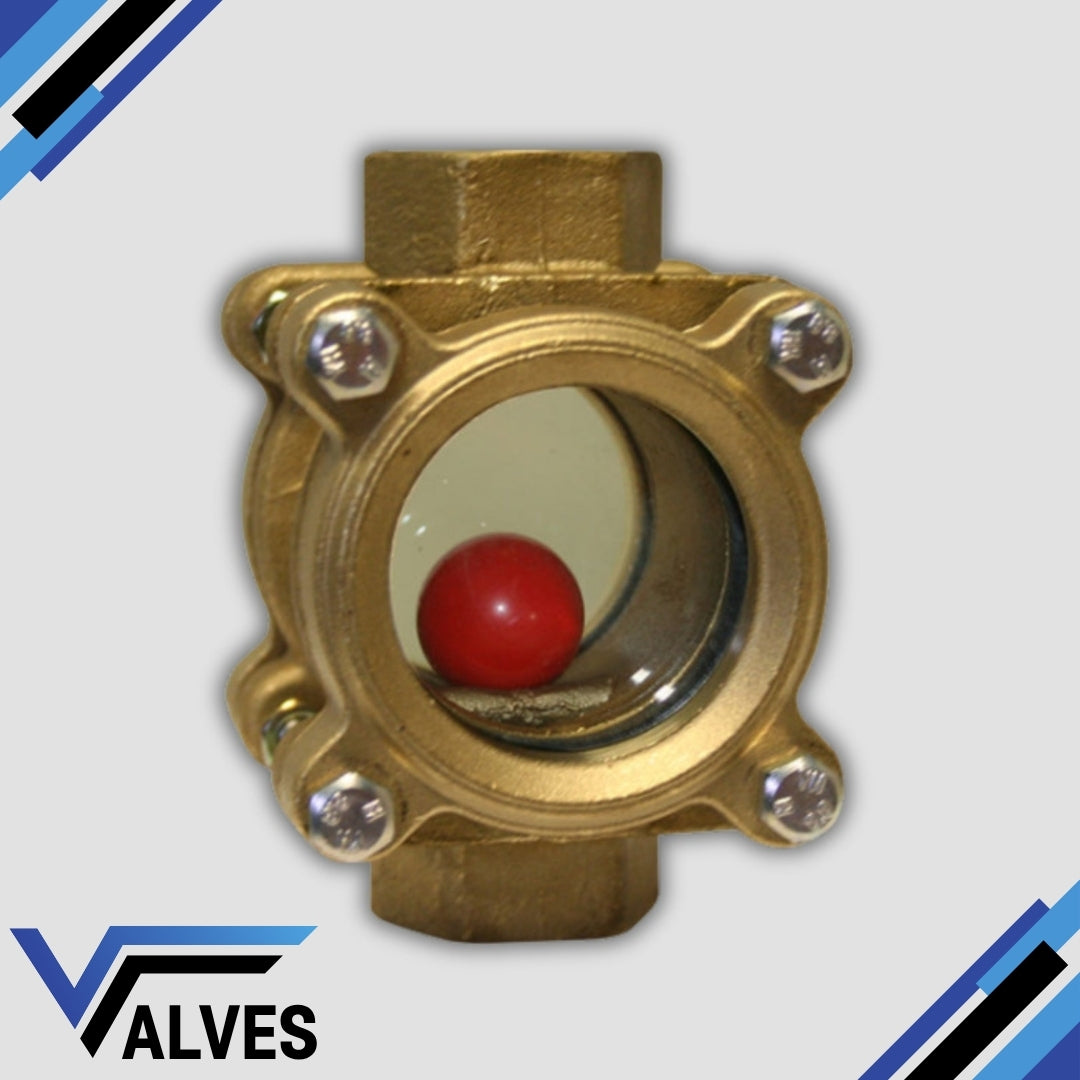Valves UK
Bronze Flow Indicator Sight Glass – Double Hardened Glass Window – Moplen Ball
Bronze Flow Indicator Sight Glass – Double Hardened Glass Window – Moplen Ball
Couldn't load pickup availability
The Bronze Flow Indicator Sight Glass with double hardened glass windows and a Moplen (polypropylene) ball offers enhanced visibility and long-lasting durability for flow monitoring in demanding systems. As fluid flows through the unit, the Moplen ball moves visibly between both windows, providing a clear and immediate indication of flow from multiple viewing angles.
Built with a robust bronze body and dual toughened glass panes, this indicator is resistant to high pressures, elevated temperatures, and mechanical wear. The lightweight, chemically resistant Moplen ball ensures compatibility with a wide range of media, including water, oils, and light chemicals.
Key Features:
- Double hardened glass windows for improved visibility and strength
- Moplen ball for clear flow indication and chemical resistance
- Bronze construction for corrosion and thermal durability
- Designed for horizontal pipeline installation
- Suitable for water, oils, light chemicals, and process fluids
- Ideal for industrial, marine, and plant room applications
Share

FAQ's
What is the difference between a valve and an actuator?
What types of actuators are available?
The main types of actuators are:
Pneumatic actuators – use compressed air for fast, reliable operation.
Electric actuators – use electrical power for precise control.
Hydraulic actuators – use fluid pressure for high-torque applications.
Each type offers unique advantages depending on the environment, media, and system control needs.
How do I choose the right actuator for my valve?
To select the correct actuator, consider:
Valve type and torque requirement
Power source available (air, electric, or hydraulic)
Operating environment (temperature, humidity, hazardous area)
Control signal type (on/off or modulating)
Matching actuator torque and compatibility with the valve’s ISO mounting ensures reliable performance.
What are the main types of valves used in automation?
The most common valves in automated systems include:
Ball valves – for tight shutoff and quick operation.
Butterfly valves – for larger flow control with compact design.
Globe valves – for precise throttling and flow regulation.
Check valves – to prevent backflow.
Gate valves – for full bore flow isolation.
What’s the difference between a double-acting and spring-return actuator?
Double-acting actuators use air (or power) to both open and close the valve.
Spring-return actuators use air to open (or close) the valve, and a built-in spring to automatically return it to a safe position when power or air is lost — ideal for fail-safe operation.
How often should valves and actuators be serviced?
Regular maintenance intervals depend on operating conditions, but a good rule of thumb is to inspect every 6–12 months.
This includes checking for leaks, lubrication, seal wear, and actuator responsiveness to prevent unexpected downtime.

